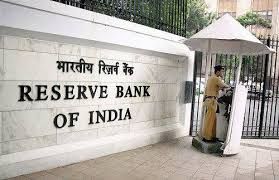If RBI continues to cut rates, banks and other financial firms’ out-performance is likely to continue
 The Reserve Bank of India surprised the market last week when it cut policy rates by 25 basis points.
The Reserve Bank of India surprised the market last week when it cut policy rates by 25 basis points.
The central bank must be satisfied that consumer inflation is under control.
One concrete target was that RBI wanted Consumer Price Index inflation to be six per cent or less, year-on-year (y-o-y), for January 2015.
Since CPI y-o-y for December 2014 was five per cent, that January target is likely to be comfortably achieved.
Obviously, RBI would also have considered other key variables like economic activity, inflation expectations, banking sector health, external pressures, the fiscal deficit and so on.
The Index of Industrial Production, was at a y-o-y change of plus 3.8 per cent in November 2014, up from a negative y-o-y of minus 4.2 per cent in October.
This indicates economic activity has picked up.
However, festivals such as Diwali and Dussehra can distort the picture, since these are associated with holidays, bonuses, and temporary hiring in retail and hospitality.
Diwali normally causes a dip in Index of Industrial Production.
Deseasonalising data to see if there is a trend underlying seasonal effects is tricky.
It’s even more complicated because Diwali-Dussehra are lunar and ‘wander’ across solar months.
The website, Capital Mind, has analysed the impact of Diwali.
According to the analysis, if Diwali occurs in different months in successive years, base effects cause distortion to y-o-y calculations.
Say, Diwali falls in November in Year 1, and Diwali falls in October in Year 2.
In Year 2, the October IIP could show a big decline because Year 1 October was normal IIP, unaffected by Diwali.
The November IIP may see a big rise in Year 2, since year 1 November IIP was hit by Diwali causing a low-base effect.
Capitalmind’s analysis indicates this ‘double-base’ effect happened in 2013 versus 2014. Diwali was in November 2013 and October 2014.
Deseasonalising suggests October 2014 y-o-y was close to zero, or slightly negative, after accounting for Diwali, while November 2014 IIP change was only about one per cent.
Deseasonalised this way, those numbers still show a slump in IIP in October 2014, and a small recovery in November 2014 IIP.
This would equate to a low inflation, low growth scenario.
RBI is likely to have reached broadly similar conclusions since it did cut rates, presumably to stimulate activity.
The January inflation numbers will be known only in February.
A host of other numbers will be available in February, which ends with the Budget on the last working day.
There will be estimates of full-year gross domestic product growth from the Economic Survey.
There will also be data about the fiscal deficit, trade data, current account data, and 2015 Budgetary projections.
A rate cut should help to weaken the rupee, which might not be a bad thing.
On the external front, the rupee has appreciated against most major currencies, except the dollar.
Roughly 80 per cent of Indian trade is dollar-denominated.
But if the rupee did weaken somewhat, it would help to maintain export competitiveness into non-dollar areas.
There is a fair amount of volatility across currency markets with a focus on the weak euro.
The Swiss have taken interesting measures.
The Swiss National Bank recently abandoned an euro-Swiss franc peg.
RBI will also have digested the results of its surveys on household inflation expectations across October-December 2014.
The central bank tries to gauge inflation expectation, since these influence consumer behaviour and make this self-fulfilling.
This was an area of disconnect until recently.
Although inflation had fallen, households didn't believe it was sustainable.
Expectations were in the range of 11-plus per cent in the previous RBI Survey, while CPI was actually running below 6.5 per cent.
Expectations have now dropped into single digits, which show consumers are accepting that inflation is finally falling.
There are other areas of worry.
Non-performing assets and restructured loans have increased alarmingly in the past two years, putting the banking sector under stress.
Another worry could be the fiscal deficit, likely to overshoot the Budget target of 4.1 per cent of GDP in this financial year (2014-15).
Again, RBI will have to take a call on acceptable levels.
Chances are, RBI will wait till the Budget and then continue cutting through the next financial year.
Real interest rates are pretty high.
The central bank could cut up to 1.5 per cent over the next financial year.
The Bank Nifty was up 72 per cent in 2014, versus a Nifty gain of 32 per cent.
If the RBI continues cutting, the outperformance by banks and other financials is likely to continue.








